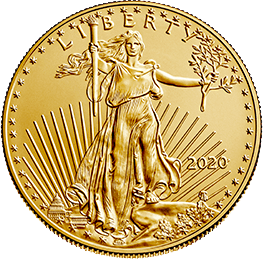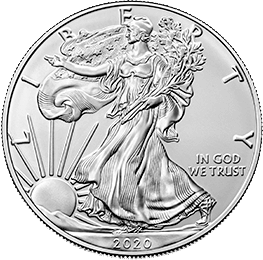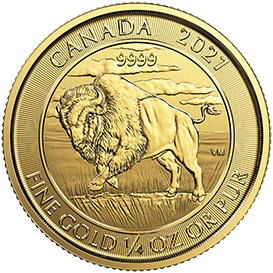
Buy Commemorative Coins
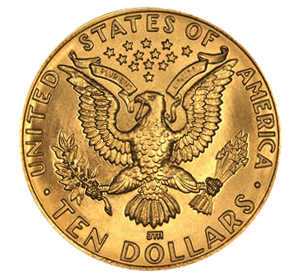
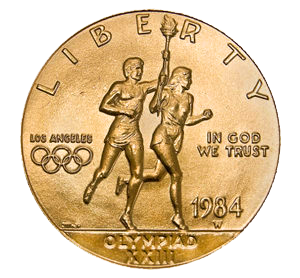


- The 1984 Olympics Commemorative $10 gold coin was part of a trio of coin designs to commemorate the 1984 Olympic Games in Los Angeles, California. The $10 gold coin was the first gold commemorative issued in the U.S. in more than fifty years. Although considered legal tender, Modern Commemoratives are not issued for general circulation. These breathtaking $10 Gold Commemoratives are prized among gold coin collectors and investors alike. Struck to honor the most exceptional events, people and places in American history, these highly sought after gold coins are enduring testaments to the spirit of the Olympic Games and a must-have for every serious collector.
Coin Details
Coin Design
- Obverse: Two Olympic runners holding a torch. The Olympic Ring appears to the left.
- Reverse: A rendition of the Great Seal of the United States featuring a heraldic eagle.
Free Insured Shipping
Price Match Guarantee
Buy-Back Commitment
What Are Commemorative Coins?
Commemorative coins are unique, legal tender minted and issued to celebrate or mark significant events, milestones, anniversaries, or historical figures. Unlike regular circulating coins that serve the primary function of everyday commerce, commemorative coins have a distinct purpose.
Here are some characteristics and aspects of commemorative coins:
1. Purpose: Commemorative coins are often produced to commemorate significant national or historical events, such as a country’s independence anniversary, historical milestones, notable personalities, or even substantial global events.
2. Design: The designs on commemorative coins are usually detailed and symbolically represent the event or person they celebrate. The design might include dates, portraits, and inscriptions explaining the significance.
3. Limited Issue: Commemorative coins are generally issued for a limited time or in limited quantities, making them more valuable and sought-after by collectors.
4. Materials: While regular coins are made from more common and less expensive metals, commemorative coins can often be made from precious metals like gold or silver, increasing their value.
5. Legal Tender: In many cases, commemorative coins are considered legal tender, which means they have a face value and can technically be used for transactions. However, their real value often exceeds this face value, so they’re typically not used this way.
6. Collectibility: Due to their unique designs, limited mintage, and the events or people they represent, commemorative coins are prevalent among coin collectors and can sometimes appreciate over time.
In many countries, national mints or similar institutions are responsible for producing and distributing these coins, often with the approval or under the authority of the government or relevant bodies.
The tradition of creating commemorative coins dates back centuries. In the United States, it began in earnest with the 1892 Columbian half-dollar coins. Congress has since authorized the U.S. Mint to produce them for events like the centennial, bicentennial, and Olympic games.
These coins are historical reminders of significant milestones, from the Apollo 11 moon landing to the Civil War. They preserve the memories of figures like Abraham Lincoln and events like World War II for future generations.
To a numismatist, these coins are more than just currency. They’re pieces of history, often in a limited mintage, making them highly sought after and valuable.
Types of Commemorative Coins
The U.S. Mint has released many commemorative coins reflecting the rich tapestry of American history, achievements, and milestones.
Here are some notable types and series of commemorative coins the U.S. Mint has issued:
1. Early Commemoratives (1892-1954): This period began with the Columbian Exposition half dollars in 1892 and covered various historical events and figures, like the Pilgrim Tercentenary and the Oregon Trail.
2. Modern Commemoratives (1982-present): After a hiatus, the U.S. Mint began issuing modern commemorative coins in 1982, starting with the George Washington 250th Anniversary half dollar.
3. U.S. Bicentennial Coins (1976): Special versions of the quarter, commemorative half-dollar, and dollar coins were released to mark the country’s 200th anniversary.
4. 50 State Quarters (1999-2008): This program celebrated each U.S. state with a unique design on the quarter’s reverse.
5. Presidential $1 Coin Program (2007-2016): These coins honored U.S. presidents in the order they served.
6. First Spouse Gold Coins (2007-2016): Released with the presidential $1 coins, these gold coins honored the first ladies.
7. American Innovation $1 Coin Program (2018-present): This program celebrates American innovations and innovators.
8. National Park Quarters (2010-2021): Also known as the America the Beautiful Quarters program, it celebrated national parks and sites.
9. Special Event Coins: Over the years, the U.S. Mint has commemorated various significant events, such as:
a. World War I and World War II anniversaries
b. Civil Rights Act
c. Apollo 11 50th anniversary
d. 9/11 National Medal
e. National Law Enforcement Memorial and Museum
f. Mount Rushmore 50th anniversary
10. Organizational Coins: These coins honor specific organizations and their milestones, such as:
a. Boy Scouts of America Centennial
b. Lions Clubs International Century of Service
c. American Legion 100th Anniversary
d. U.S. Marine Corps
11. Cultural and Historical Figures: Recognizing significant individuals or groups in U.S. history:
a. Mark Twain
b. Native American Code Talkers
c. Rosa Parks
12. Sporting Events: For instance, coins celebrating the Olympic Games in the U.S.
13. Wildlife & Nature: Coins like the Bald Eagle Commemorative Coin celebrate the recovery of the bald eagle species.
The U.S. Mint has released numerous other commemorative coins celebrating various themes, events, and individuals that were significant in American history and culture.
Commemorative Coin Background
The commemorative coin landscape in the United States can be distinctly divided into two eras: the early commemoratives (1892-1954) and the modern era (1982-present).
Though the early period witnessed the minting of coins celebrating pivotal events and figures, by the mid-1950s, this momentum had waned due to various reasons, including concerns about the commercialization of the program.
The hiatus in the commemorative coin program lasted for several decades until the 1980s, when Congress recognized the potential of these coins to not only memorialize history but also to educate the public and raise funds for significant national projects and initiatives.
Revitalization in the 1980s
In 1982, the modern commemorative coin era was officially inaugurated with the passage of the George Washington Commemorative Coin Act. It was marked by the release of a half-dollar silver coin, celebrating the 250th anniversary of George Washington’s birth. This coin’s success catalyzed more commemorative coin legislation and releases.
Driving Forces Behind the Revival
Several reasons drove the comeback of these coins:
1. Educational Potential: These coins were seen as a tangible way to educate the American public about significant events, figures, and milestones in U.S. history. For instance, holding a coin commemorating the Korean War could elicit a direct connection to that period, possibly prompting someone to learn more.
2. Fundraising Capability: Beyond their educational and commemorative values, these coins also served as fundraising tools. Surcharge revenues from their sales have funded various projects and initiatives, from preserving historical sites to supporting Olympic athletes.
3. Broadening Historical Awareness: The program took a holistic approach to American history. It didn’t just celebrate wars or political milestones — it delved into cultural, societal, and scientific achievements. For instance, civil rights milestones, such as the Little Rock integration, were immortalized, offering a nuanced view of American progress.
4. Public Accessibility: Before the age of the internet, tangible items like coins served as direct, accessible conduits to history. Owning a coin commemorating the Bill of Rights or the Women’s Suffrage movement meant possessing a piece of America’s legacy, making history palpable.
In essence, revitalizing the commemorative coin program in the 1980s was more than just about producing coins. It was about crafting history, fostering national pride, and educating citizens, making it a holistic initiative that resonated deeply with the American ethos.
Characteristics of Commemorative Coins
Every classic commemorative coin tells a story through its design:
Obverse: The front, which often depicts a significant figure or symbol
Reverse The back, which may provide context or a complementary image to the obverse
General Design: The overall aesthetics, including inscriptions and motifs, reflect the essence of the commemorated event or personality.
Mint Marks
United States Mint marks signify where a coin was produced. For instance, coins minted in San Francisco bear the S mark, while those from West Point feature a W. Knowing these marks helps determine a coin’s origin and authenticity.
Value of Commemorative Coins
Beyond their face denominations, these coins, especially those in uncirculated condition, may be precious. Factors like rarity, mintage, and historical significance influence their value. Collectors often seek NGC-graded coins for their authenticity. You can acquire these treasures from reputable dealers, auctions, or the U.S. Mint.
Why Buy Commemorative Coins?
For many, the allure of commemorative coins extends beyond their shiny exteriors. Like precious metals, they can serve as both historical artifacts and valuable assets. Here are some compelling reasons to consider buying commemorative coins:
1. Historical Significance: Each commemorative coin tells the story of a pivotal moment or person. Owning one is akin to holding a piece of history in your hands. For instance, coins commemorating the Apollo 11 mission might reignite the excitement of the moon landing.
2. Collectible Nature: Coin collecting is a popular hobby globally. For collectors, acquiring a rare or significant commemorative coin for their collection is a fulfilling pursuit that increases in value over time.
3. Artistic Appreciation: The designs on commemorative coins often stand out for their intricate details and artistry. This makes them appealing to those who appreciate art and craftsmanship.
4. Educational Tool: For parents or educators, commemorative coins can be an interactive way to teach children about history. A coin commemorating the Civil War or the signing of the Declaration of Independence may serve as a tactile introduction in broader discussions about those events.
5. Supporting Causes: The sale of many commemorative coins often includes a surcharge for funding related causes, organizations, or memorial projects. Buying such a currency means you’re supporting these initiatives. For instance, a coin commemorating a national park may contribute to conservation efforts.
6. Legacy and Heirlooms: Commemorative coins can be passed down through generations as family heirlooms, ensuring that the stories they represent continue to be told.
7. Gift Potential: Given their historical and artistic value, these coins make thoughtful gifts for various occasions, be it birthdays, anniversaries, or academic achievements.
8. Tangible Asset: In an increasingly digital world, it’s reassuring to possess a real asset. Coins, especially those made from precious metals, can be a stable purchase in uncertain economic times.
9. National Pride: Owning a coin that celebrates one’s national history or achievements can instill a sense of pride and cultural belonging.
Commemorative coins are not just pieces of precious metals but treasures encapsulating America’s rich tapestry of history and achievements. Thinking about adding these to your collection? Trust in American Hartford Gold for unparalleled accessibility to a vast range of coins to help you discover and procure your next prize.
Sources:
Commemorative Coin Programs | U.S. Mint
Commemorative Coins from 1892-1954 | U.S. Mint
Commemorative Coins – American Numismatic Association | American Numismatic Association
Related Products
Get Your Free 2025 Guide

